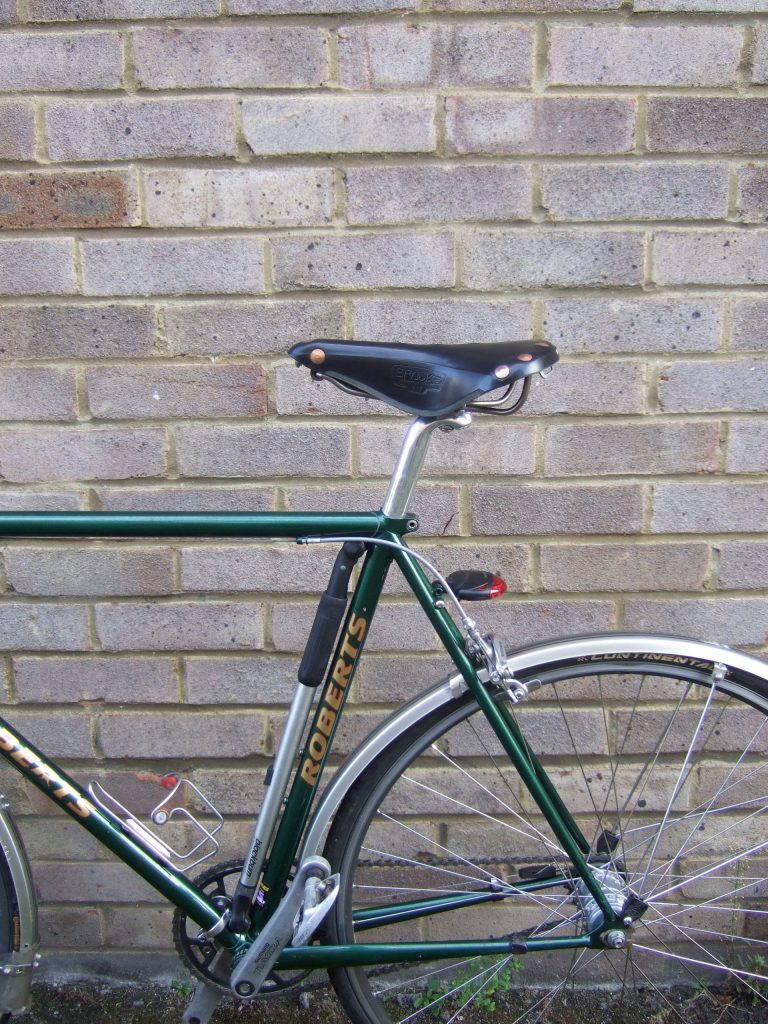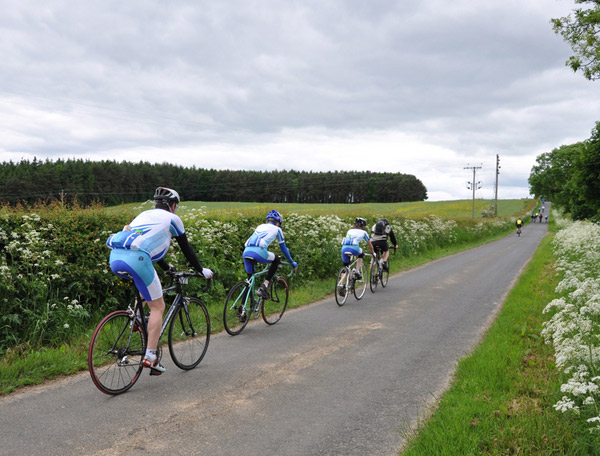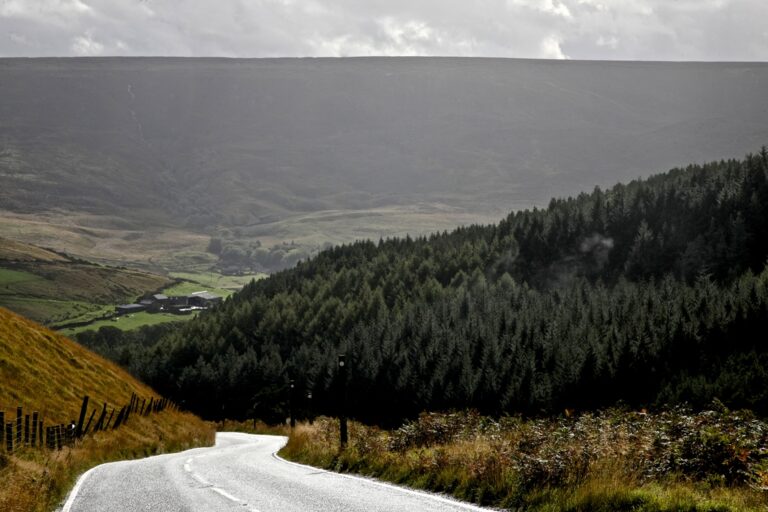Last week we looked at two aspects of descending: good observation and correct line choice through the corner. This week we’ll look at what you can do on the bike at the various stages of cornering. This involves using the brakes to regulate your speed on the way into the corner, your gear selection for the best exit speed and where you should position your bodyweight when approaching and riding through the corner.
Anticipation
A large part of good downhill technique is based on your anticipation of what is to come. You often can’t see very far round the bend so unless you’re on familiar roads, you need to anticipate what’s coming at you. When doing this you need to be in control at all times, so if you can’t see what’s coming up, err on the side of slowing down slightly too much. If the bend turns out to be less challenging than expected you can usually pick up speed by starting to pedal early.
If, however, the bend turns out to be much tighter and steeper than you expected it to be, and you’re carrying too much speed, you can’t always slow down quickly without risking losing the wheels from under you by cornering with your brakes applied. This is something you should aim never to do, especially in the wet. So always anticipate on the side of caution as you gain experience.
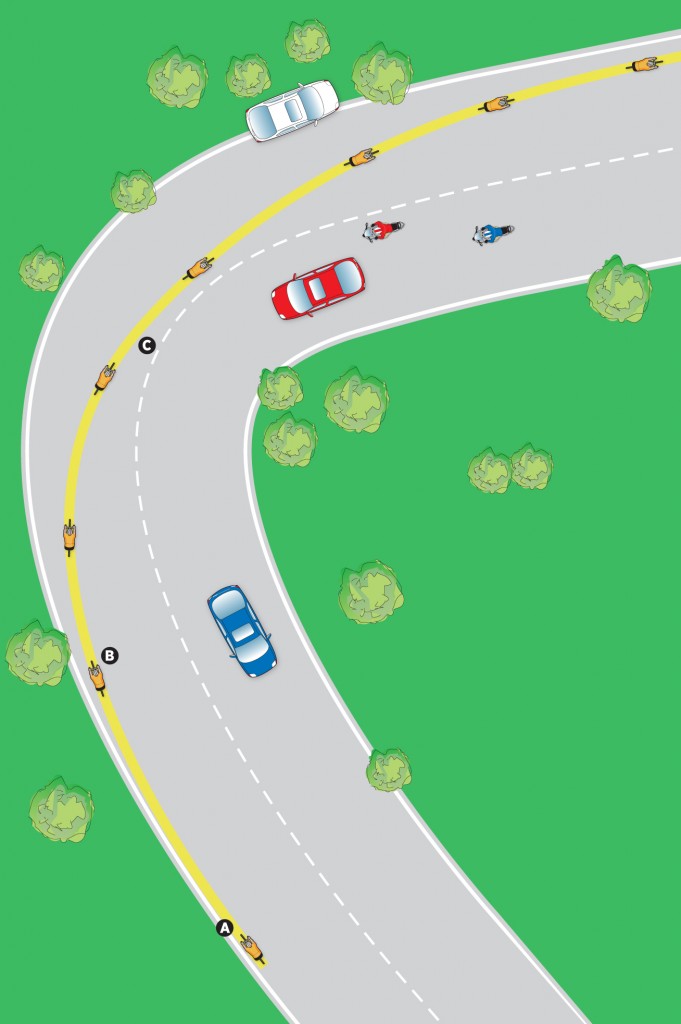
Look at the diagram and our rider, in position ‘A’ is coming into the bend following a long, straight downhill. They’ve been tucked into an aerodynamic position and pedalling a big gear to maximize the speed on the descent. This is the most critical point of the corner even though our rider hasn’t even arrived at it yet, because what they do here dictates how successfully (or otherwise) they can negotiate the bend.
Finding yourself in this situation you first need to sit up well in advance of the corner to give yourself a better view of what’s coming, and open your chest and arms to the effects of ‘air-braking’ to begin slowing yourself down. Further regulate your speed by easing on both brakes at the same time. Don’t grab them suddenly but feel them start to bite then increase the pressure gradually, if necessary.
At this point your bodyweight will naturally slide forward on the saddle but you need to resist this. Control the braking effect by sliding your bodyweight back over the rear tyre slightly, until you achieve your desired speed. You’ll also remember from last weeks article that you are looking as far ahead around the turn as possible and are riding as wide as possible as road conditions allow to help maximize this.
Turning too hard a gear?
This is also the point when, having been turning a hard gear, you want to be shifting to an easier gear in anticipation of what’s round the bend. Err on the side of too easy a gear as there might be a nasty surprise in the shape of a sharp uphill climb and you don’t want to be hitting that in a big gear. Again, it’s a lot easier to shift into a harder gear in the bend and get pedalling if the road is still dropping away from you than it is to shift into an easier gear, on a sudden unexpected 20% climb – you’ve all heard those sudden grinding sounds of riders desperately trying to find an easy gear and it’s not good. So you’ve got your speed right, adjusted your bodyweight, chosen your gear and picked your line into the corner. Sounds like a lot of things going on but remember this is all happening simultaneously and will take place in a matter of seconds, leaving you to negotiate the bend.
Plan your line
At position ‘B’ in our diagram you can see sufficiently through the bend to plan your line and this is where you start ‘turn-in.’ Begin by shifting your body weight slightly forward as more weight over the front wheel gives you more control over the bike. At turn-in, experienced riders will also apply a bit of ‘countersteering’.
This means that just before you steer and lean into the right hand bend you briefly straighten the handlebars away from the direction of the turn then back again to steer into it. This has the effect of exaggerating the speed at which the bike leans into the corner and means you can make a quicker and sharper turn. Practice this on a flat road bend until you get familiar with what it feels like, and remember, the more speed you carry the greater the effect. You’ll soon be able to turn in later and thus carry more speed safely through the bend.
Point C
By now you’re at point C. You’re close to the apex of the bend, aiming for a wide exit and able to anticipate what’s coming next and prepare for it. If you’re negotiating a series of bends then the whole process repeats itself as soon as you identify that there’s another bend coming up. If however you have a clear run out of the bend, possibly into a climb, you want to get on the power straight away, so pick the bike up out of the lean and get pedalling as soon as possible. As soon as the bike is upright you can think about changing gear and getting out of the saddle if necessary.
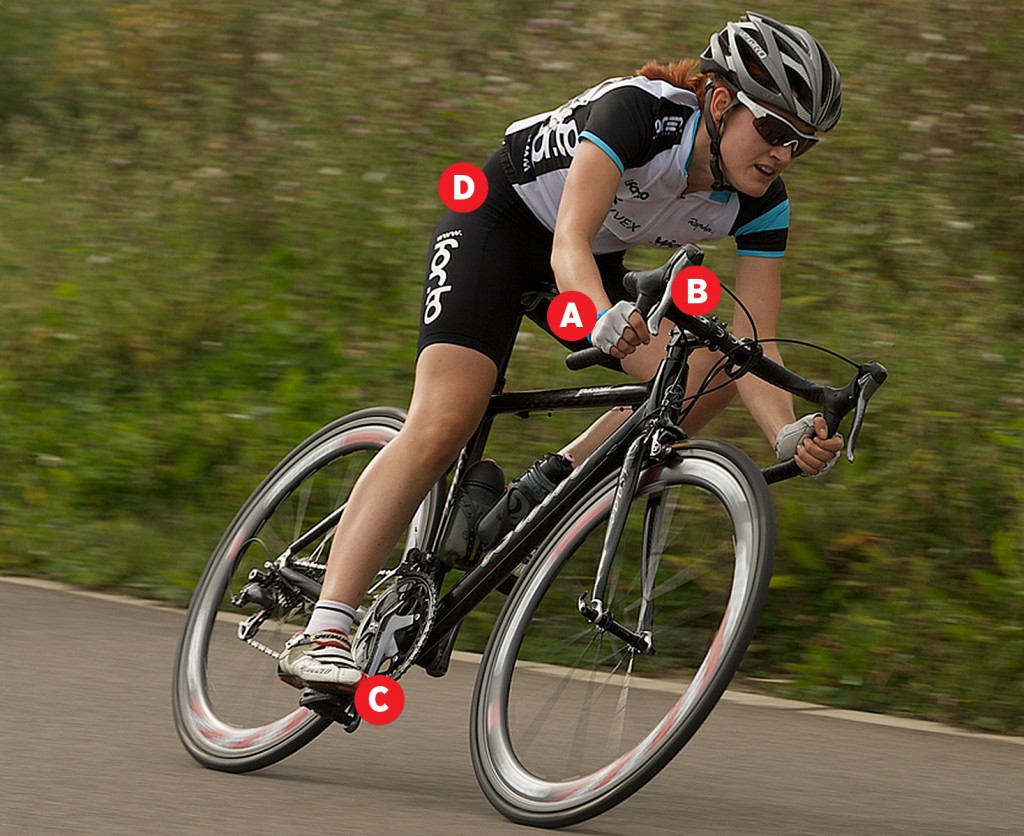
Body positioning
Let’s look at the key points regarding your body position on the bike during downhill cornering. Look at this picture of expert descender, Rohan Battison of the ForViored Brookvex women’s racing team. Her hands, arms and shoulders are totally relaxed while maintaining a firm grip on the drops of the handlebars ‘A’. At all costs avoid a vice-like, tight grip on the bars as this restricts your ability to manouvere the bike and is plain uncomfortable. Less experienced riders might want to ‘cover’ the brake levers with their fingers ‘B’. You wouldn’t be applying them fully as ideally you’d have anticipated your speed perfectly prior to going into the bend but you might need to quickly ‘feather’ them (just tap them lightly so the pads momentarily make contact with the rims) in order to micro adjust any excess speed that you need to scrub off.
Outside pedal down
Rohan’s outside pedal is in the lowest position ‘C’ so as not to ground the inside pedal if she has to lean the bike quite steeply but also to apply some counterweight to the forces of gravity trying to push her away from the bend and her body weight is slightly forward on the saddle to put some weight over the front of the bike ‘D.’ Her eye-line is important at this point and you can learn a lesson from downhill skiers here. As you lean the bike, try to keep your eye-line parallel with the horizon line, it’ll help you maintain a sense of where you are in the bend and stay on your pre-determined line.
Descending in a group
Finally we need to consider how the dynamic changes when you’re descending in a group. Everything from your view through the bend to what sort of road surface you’re riding towards, what hazards are present to your speed and position on the road are likely to be compromised by other riders around you. Keep this in mind and try to work as much space for yourself as possible. While it’s good to learn a lot from the riders in front of you, be aware that they might not be on the best line or interpreting the bend in the best way possible so don’t follow them blindly, look ‘around’ them as much as possible and make sure you follow your own line, at your own speed as best you can.
Part 1: Going for Centuries
Part 2: Breaking down the barriers
Part 3: Goal setting
Part 4: Intensity
Part 5: Get in the Zone
Part 6: Performance Testing
Part 7: Creating a training plan
Part 8: Weekly training plans
Part 9: Be a better climber
Part 10: Improve your pedalling
Part 11: Become a better descender
Part 13: Upping the pace
About the author:
Huw Williams is a British Cycling Level 3 road and time trial coach. He has raced on and off road all over the world and completed all the major European sportives. He has written training and fitness articles for a wide number of UK and international cycling publications and websites and as head of La Fuga Performance, coaches a number of riders from enthusiastic novices to national standard racers.
Contact: [email protected]


